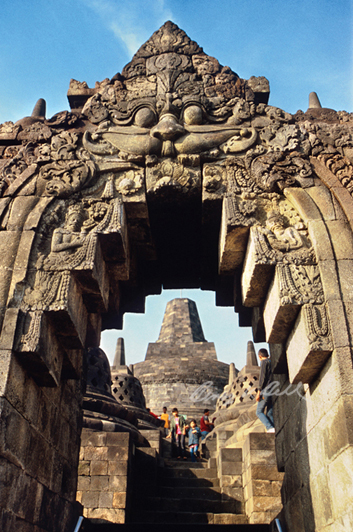Benoy K Behl
The great Borobudur stupa of the 8th-9th century CE in Indonesia clearly illustrates the purpose of the stupa in Buddhist thought. The vast stupa has exquisite relief made around it, which one sees as one goes around the stupa. At the lowest level of circumambulation, we are presented the kamadhatu, the life of passions in the world.
We then climb up the steps on the side of the edifice and the next two levels present us relief of the karmadhatu, or how we can improve our lot through good actions.
The two levels above that present us the rupadhatu, the personification of enlightenment, through the life of Gautama Buddha. We see the Lalitvistara, the drama of the life of the Buddha. Here, we see scenes from his life and the Jataka stories.
Finally, we go upward still, through the gateway of Kala, or Time. You would see the face made on the top of the gateway, from which emerge the forms of the world, for all the ephemeral shapes of the material world, exist only in Time.
Leaving behind Time itself, we approach the final truth, the arupadhatu, that which is without form. Here, at the final point of the ascent, it is the stupa itself which is before us. Here, we may meditate undisturbed by the shapes of the transitory material world.
